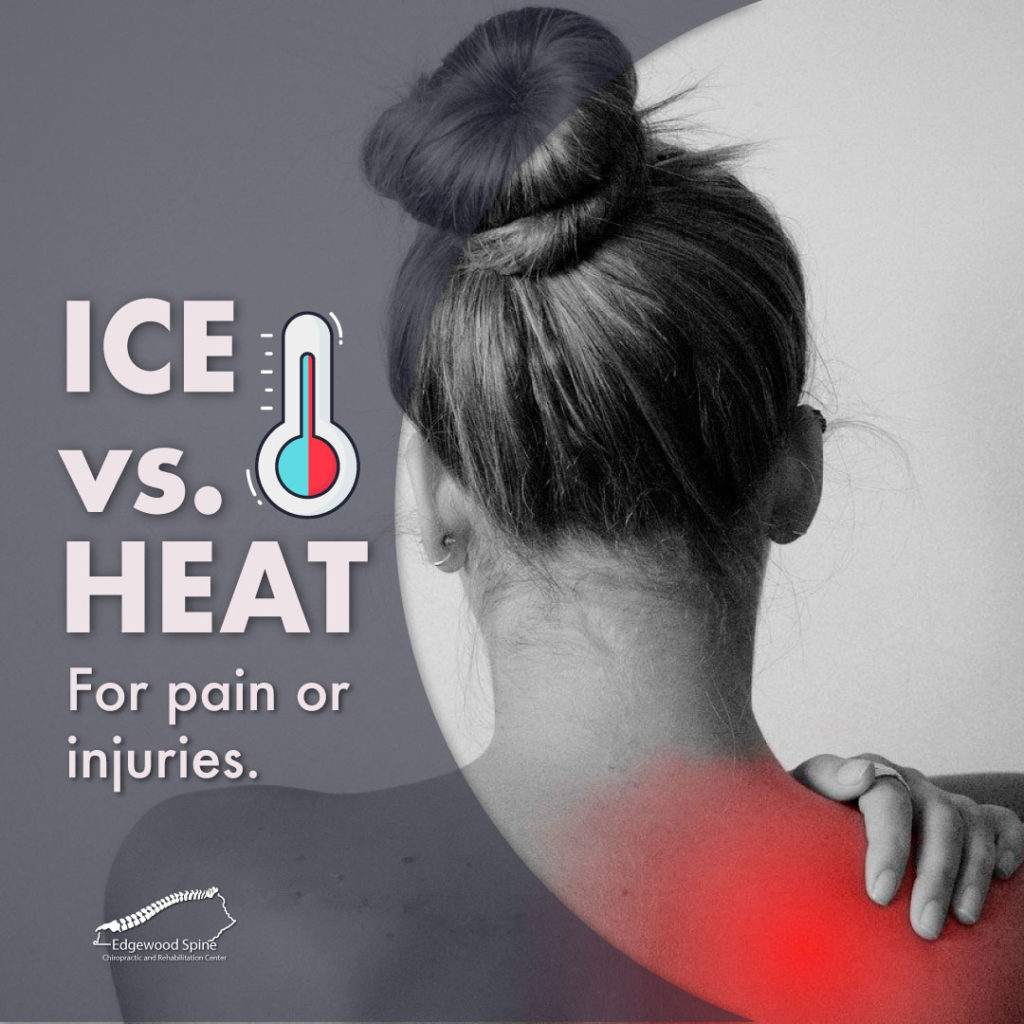
Should you use heat or ice on your painful injury?
When you’re experiencing pain or injuries, sometimes it’s difficult to determine which one best treats your symptoms.
The right way to solve the riddle is to recognize the type of injury or pain you’re dealing with.
Understanding the physiological and biochemical causes helps us differentiate whether you should go for ice or heat.
In this article, we’ve created an essential guide to help you recognize what your modus operandi must be when it comes to deciding between both methods.
When to use ice
Ice application provides vasoconstriction, analgesia, and sedation, using two main mechanisms:
- Limits the amount of blood leaking out of capillaries, which is essential in slowing the effects and reducing muscular and bone injury.
- Reduces nerve conduction velocity, that is, the speed at which nerve impulses are transmitted, and so reduces the number of pain signals that reach your brain per unit time.
Ice is used ideally with recent injuries, meaning ones that happened within the last 48 hours, such as:
- Recent injuries
- Inflamed, hot, red, or swollen tissue
- Bleeding
- Sprains (ankle, knee, wrist)
- Recent surgery
- Recent muscle tear
When these types of injuries happen, blood leaks into the spaces between cells and tissues, where it doesn’t belong, and it’s the uncontained blood pressuring on local nerve endings that creates pain. That’s why a cold environment is beneficial.
On the opposite hand, don’t use ice when treating any of these symptoms or diseases:
- Cold allergies
- Areas with reduced sensations or blood flow
- Vascular impairment
- Patients in coma
- Types of arthritis
- Raynaud’s phenomenon
When to use heat
Contrary to ice, heat application has the purpose of increasing blood flow, providing oxygen and nutrients, and relaxing the zone in pain.
- Increases blood flow to the area of injury/pain by dilating blood vessels.
- By increasing blood flow and oxygen, it improves the flexibility of tight tissues.
Heat is ideally used with chronic pain or pain that you have had for a long time. Also, after the swelling and initial pain has subsided.
- Muscle aches
- Arthritis
- Joint and muscle stiffness
- Fibromyalgia
- All types of cramps
- Body tension
On the other hand, don’t use heat when treating any of these symptoms or diseases:
- Fresh injuries
- Open wounds
- Areas that are reddened, bruised, or swollen
- Acute skin conditions
- Encapsulated swelling
- Hemorrhagic disorders
How to correctly apply them
There are certain “don’ts” when it comes to applying both methods. It’s essential to have them in mind so that you don’t make the issue even worse.
When applying ice:
Ice packs should always be wrapped in a towel. Ice shouldn’t be applied directly to the skin.
The duration and frequency of ice applications are not an exact science. A helpful guideline is to apply ice for 15 minutes every two hours for a moderately acute injury, using three to four ice applications per day.
When applying heat:
Heat must be applied in wet packs wrapped in a towel. Direct heat when not using special instruments such as compresses can be threatening. Very similar to ice application, 15 minutes every two to three hours, up to several applications per day.
However, it is likely that you will instinctively know when the time is right to apply again after a break in both cases.
If the pain or injuries don’t get better
Recovering from an injury of any type requires your body to put forth a great deal of effort, which needs support from the nervous system, the body’s master system. Regular chiropractic care provides great assistance in the process of recovery from injuries.
By detecting and correcting spinal misalignment and sources of nerve interference, chiropractors help ensure optimal functioning of the nerves.
Get the help your body needs to recover properly, contact us and we’ll gladly help.
